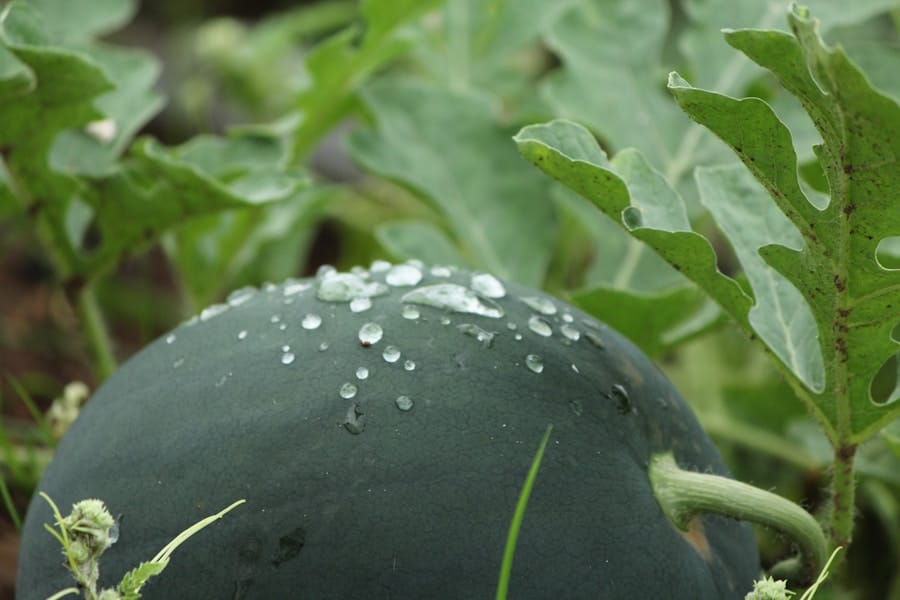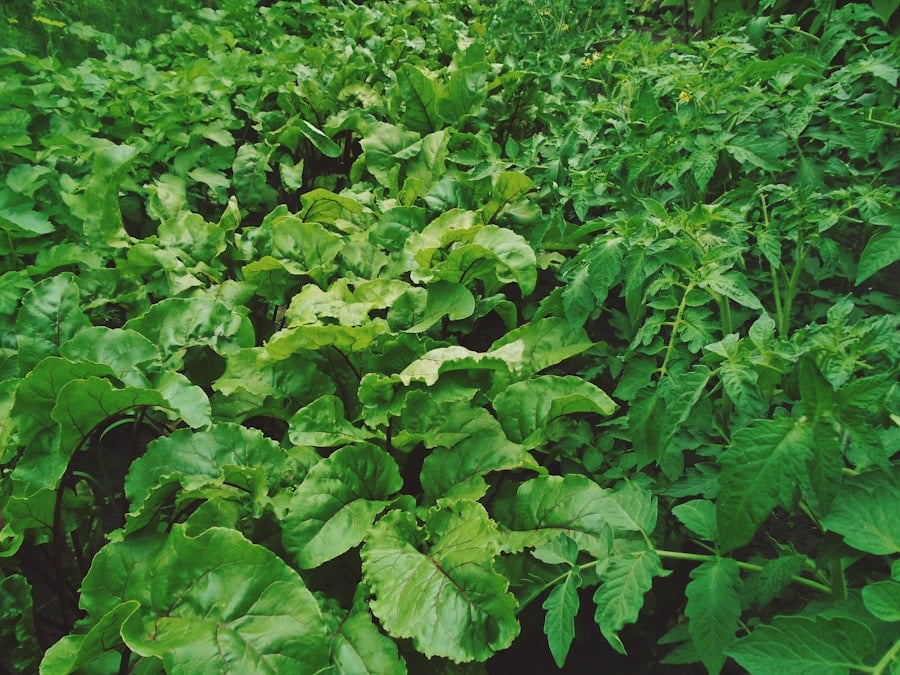Liquid fertilizers are nutrient-rich solutions designed to provide essential elements to plants in a readily available form. Unlike granular fertilizers, which require time to dissolve and be absorbed by the soil, liquid fertilizers can be quickly taken up by plants through their leaves and roots. This immediacy makes them particularly appealing for gardeners and farmers looking to address nutrient deficiencies or promote rapid growth.
The composition of liquid fertilizers can vary widely, encompassing a range of nutrients including nitrogen, phosphorus, potassium, and micronutrients, all of which play critical roles in plant health. The formulation of liquid fertilizers can be tailored to meet specific plant needs. For instance, some products are designed to support leafy growth, while others may focus on flowering or fruiting stages.
The versatility of liquid fertilizers allows for targeted applications that can enhance the overall health and productivity of vegetable crops. Additionally, the ease of application—whether through foliar spraying or soil drenching—makes liquid fertilizers a popular choice among both commercial growers and home gardeners. Check out the latest fertilizers for your garden at Soil Compost.
Key Takeaways
- Liquid fertilizers are concentrated nutrients that can be easily absorbed by plants through their roots and leaves.
- Using liquid fertilizers for vegetables can promote faster growth, higher yields, and better overall plant health.
- When choosing liquid fertilizers, consider the nutrient content, application method, and organic vs. synthetic options.
- Top organic liquid fertilizers for vegetables include fish emulsion, seaweed extract, and compost tea.
- Top synthetic liquid fertilizers for vegetables include balanced NPK formulas and micronutrient-rich options.
Benefits of Using Liquid Fertilizers for Vegetables
One of the primary advantages of liquid fertilizers is their rapid absorption by plants. This quick uptake can lead to immediate improvements in plant vigor and health, particularly in situations where plants exhibit signs of nutrient deficiency. For example, if a vegetable crop shows yellowing leaves due to nitrogen deficiency, applying a nitrogen-rich liquid fertilizer can quickly restore the plant’s green color and overall vitality.
This responsiveness is crucial during critical growth phases when plants require specific nutrients to thrive. Moreover, liquid fertilizers can enhance nutrient availability in the soil. When applied, they not only provide immediate nourishment but also help to solubilize nutrients that may be locked in the soil matrix, making them more accessible to plant roots.
Additionally, the ability to mix liquid fertilizers with water allows for more precise control over nutrient concentrations, enabling gardeners to tailor their applications based on specific crop needs.
Factors to Consider When Choosing Liquid Fertilizers

Selecting the right liquid fertilizer involves several considerations that can significantly impact plant growth and yield. One of the foremost factors is the nutrient composition of the fertilizer. Understanding the N-P-K ratio—representing nitrogen (N), phosphorus (P), and potassium (K)—is essential for determining which fertilizer will best meet the needs of specific vegetable crops.
For instance, leafy greens may benefit from a higher nitrogen content, while root vegetables might require more phosphorus for robust root development. Another critical aspect is the source of the nutrients. Organic liquid fertilizers, derived from natural sources such as compost teas or fish emulsions, often provide a slow-release effect and improve soil health over time.
In contrast, synthetic liquid fertilizers typically offer immediate nutrient availability but may not contribute to long-term soil fertility. Gardeners must weigh these options based on their gardening philosophy, environmental considerations, and specific crop requirements. Additionally, factors such as pH levels, soil type, and local climate conditions should also influence the choice of liquid fertilizer.
Top Organic Liquid Fertilizers for Vegetables
| Fertilizer Brand | Nitrogen Content (%) | Phosphorus Content (%) | Potassium Content (%) |
|---|---|---|---|
| Neptune’s Harvest Organic Fish & Seaweed Blend | 2 | 3 | 1 |
| Dr. Earth Home Grown Tomato, Vegetable & Herb Fertilizer | 4 | 6 | 3 |
| Jobe’s Organics Vegetable & Tomato Fertilizer | 2 | 5 | 3 |
Organic liquid fertilizers have gained popularity among environmentally conscious gardeners due to their sustainable nature and ability to improve soil health. One notable example is fish emulsion, which is rich in nitrogen and trace minerals. Fish emulsion is made from whole fish or fish by-products and provides a balanced nutrient profile that supports vigorous plant growth.
It is particularly effective for leafy vegetables like lettuce and spinach, where nitrogen is crucial for leaf development. Another excellent organic option is seaweed extract, which contains a wealth of micronutrients and growth hormones that stimulate root development and enhance plant resilience against stressors such as drought or disease. Seaweed extracts can be applied as a foliar spray or soil drench and are beneficial for a wide range of vegetables, including tomatoes and peppers.
Additionally, compost tea—a nutrient-rich solution made by steeping compost in water—can serve as an effective organic liquid fertilizer that promotes microbial activity in the soil while providing essential nutrients.
Top Synthetic Liquid Fertilizers for Vegetables
Synthetic liquid fertilizers are formulated to deliver nutrients in a highly concentrated form, allowing for rapid absorption by plants. One widely used synthetic option is urea-based fertilizers, which are high in nitrogen content. Urea can be particularly effective for fast-growing crops like cucumbers and zucchini that require substantial nitrogen for optimal growth.
When applied correctly, urea can lead to lush foliage and increased yields. Another popular synthetic choice is a balanced N-P-K liquid fertilizer, such as a 10-10-10 formulation. This type of fertilizer provides equal parts nitrogen, phosphorus, and potassium, making it suitable for a variety of vegetable crops throughout their growth cycles.
For instance, during the early stages of growth, this balanced approach supports root establishment and overall plant vigor. As plants transition into flowering and fruiting stages, adjusting the application rate can help meet their changing nutrient demands.
How to Apply Liquid Fertilizers to Vegetables

Foliar Application
One common method is foliar application, where the fertilizer solution is sprayed directly onto the leaves of the plants.
However, it is essential to apply foliar fertilizers during cooler parts of the day—early morning or late afternoon—to minimize evaporation and potential leaf burn.
Soil Drenching
Soil drenching is another effective application method that involves applying the liquid fertilizer directly to the soil around the base of the plants. This technique ensures that nutrients are readily available to the root system and can be particularly beneficial during periods of active growth or when transplanting seedlings.
Precautions and Best Practices
When using this method, it is crucial to follow recommended dilution rates and application frequencies to avoid over-fertilization, which can lead to root damage or nutrient leaching.
Tips for Maximizing the Effectiveness of Liquid Fertilizers
To maximize the benefits of liquid fertilizers, timing and frequency of application are critical factors. Applying fertilizers during key growth stages—such as before planting or during flowering—can significantly enhance their effectiveness. For instance, applying a nitrogen-rich liquid fertilizer just before planting leafy greens can promote robust early growth.
Similarly, providing additional nutrients during flowering can support fruit set and development. Additionally, combining liquid fertilizers with other practices such as mulching or regular watering can further enhance their effectiveness. Mulching helps retain soil moisture and temperature while reducing weed competition, allowing plants to utilize nutrients more efficiently.
Regular watering ensures that nutrients are dissolved and accessible to plant roots while preventing salt buildup in the soil from concentrated fertilizer applications.
Common Mistakes to Avoid When Using Liquid Fertilizers on Vegetables
One prevalent mistake among gardeners is over-fertilization, which can lead to nutrient imbalances and damage to plants. It is essential to adhere to recommended application rates and frequencies based on specific crop needs and growth stages. Over-fertilization can result in excessive foliage growth at the expense of fruit production or even cause root burn due to high salt concentrations in the soil.
Another common error is neglecting to consider environmental factors such as rainfall or temperature when applying liquid fertilizers. For instance, applying fertilizers just before heavy rain can lead to runoff and nutrient loss from the garden bed. Similarly, applying fertilizers during extreme heat can stress plants and hinder their ability to absorb nutrients effectively.
By being mindful of these factors and adjusting application practices accordingly, gardeners can optimize their use of liquid fertilizers for healthier vegetable crops.
If you are looking for the best liquid fertilizer for your vegetables, you may also be interested in learning about common signs and treatments for orchid disease. Orchids are delicate plants that require specific care, much like vegetables. Understanding how to properly care for orchids can help you better care for your vegetable garden as well. Check out this informative article on common signs and treatments for orchid disease to expand your knowledge on plant care.
FAQs
What is liquid fertilizer?
Liquid fertilizer is a concentrated form of plant nutrients that is dissolved in water and applied to plants through watering. It provides essential nutrients to plants in a readily available form.
Why use liquid fertilizer for vegetables?
Liquid fertilizer is quickly absorbed by plants, providing them with an immediate boost of nutrients. This can be especially beneficial for vegetables, which have high nutrient requirements for healthy growth and abundant yields.
What are the benefits of using liquid fertilizer for vegetables?
Liquid fertilizer can help vegetables grow faster, produce higher yields, and improve overall plant health. It can also be easily applied through watering, making it convenient for home gardeners.
What nutrients should I look for in a liquid fertilizer for vegetables?
The best liquid fertilizer for vegetables should contain a balanced mix of essential nutrients, including nitrogen, phosphorus, potassium, and micronutrients like calcium, magnesium, and sulfur. These nutrients are crucial for healthy vegetable growth and development.
How often should I apply liquid fertilizer to my vegetables?
The frequency of liquid fertilizer application will depend on the specific product and the needs of your vegetables. In general, it is recommended to apply liquid fertilizer every 2-4 weeks during the growing season, following the instructions on the product label.
Can I make my own liquid fertilizer for vegetables?
Yes, you can make your own liquid fertilizer for vegetables using compost tea, seaweed extract, or other organic materials. However, it’s important to ensure that the homemade fertilizer provides a balanced mix of nutrients and is applied in appropriate concentrations to avoid over-fertilization.

